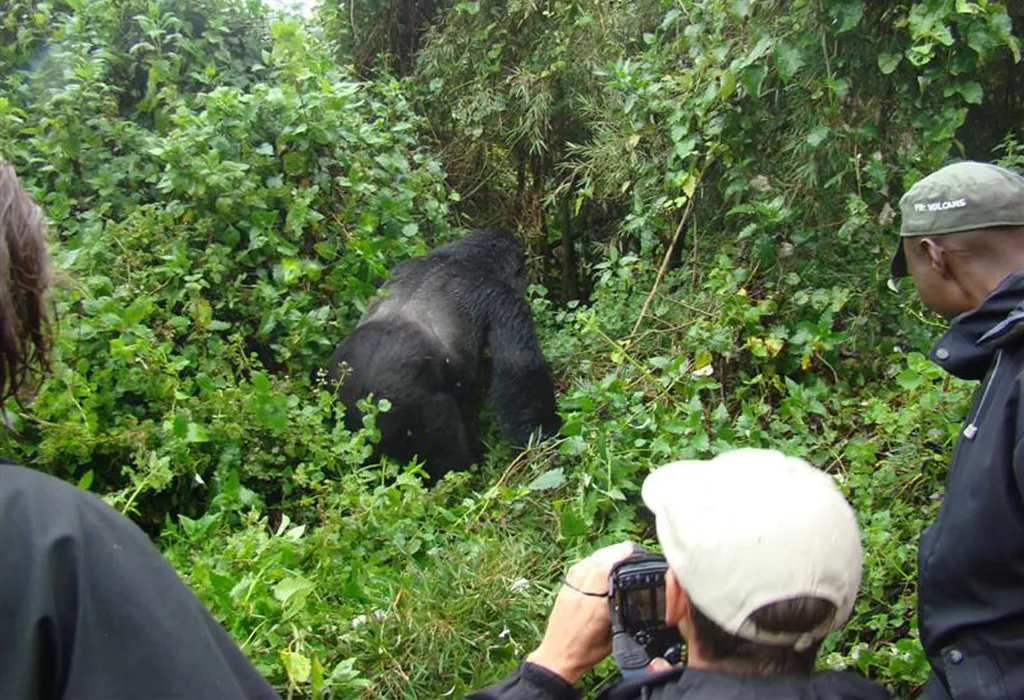Bwindi Impenetrable Forest National Park
Bwindi Forest National Park: Uganda’s Impenetrable Wildlife Sanctuary
Nestled in southwestern Uganda, Bwindi Impenetrable Forest National Park stands as one of Africa’s most remarkable ecological treasures. This UNESCO World Heritage Site spans 331 square kilometers of ancient afromontane rainforest, harboring nearly half of the world’s remaining mountain gorillas. Beyond its famous primates, Bwindi offers an extraordinary biodiversity experience that attracts wildlife enthusiasts, conservationists, and adventure seekers from across the globe.
Historical Background and Conservation Status
Originally designated as the Bwindi Impenetrable Forest Reserve in 1942 by colonial authorities, the area achieved national park status in 1991. This elevation in protection was primarily driven by the need to safeguard the critically endangered mountain gorilla population residing within its dense forests.
In 1994, Bwindi earned UNESCO World Heritage Site designation, recognizing its irreplaceable ecosystems and unique flora and fauna. Today, the Uganda Wildlife Authority manages the park in partnership with various international conservation organizations, focusing on sustainable tourism while protecting biodiversity.
Ecological Significance
Bwindi represents one of Africa’s oldest ecosystems, with forests dating back over 25,000 years. The park’s elevation ranges from 1,160 to 2,607 meters above sea level, creating diverse microclimates that support an incredible variety of species adapted to different environmental conditions.
The “impenetrable” nature of Bwindi stems from its thick vegetation, rugged terrain, and steep topography. This challenging landscape supports over 400 plant species, 120 mammal species, 350 bird species, and 200 butterfly species. Among its residents are 11 primate species, including the flagship mountain gorillas and chimpanzees.
Mountain Gorilla Experience
Bwindi houses approximately 400 mountain gorillas, representing nearly half of the world’s total population of these gentle giants. Gorilla trekking offers visitors an unparalleled opportunity to observe these magnificent creatures in their natural habitat.
Gorilla encounters require advance permit booking through the Uganda Wildlife Authority or authorized agencies. Treks can last one to eight hours depending on gorilla family locations, with experienced guides leading groups through the forest. Visitors are permitted one precious hour with each gorilla family to observe their social behaviors, feeding patterns, and natural interactions.
Trekking Sectors
Bwindi offers four distinct trekking sectors: Buhoma, Ruhija, Rushaga, and Nkuringo. Each sector provides unique experiences with varying terrain difficulty levels and different gorilla groups, allowing visitors to choose based on their physical capabilities and preferences.
Birdwatching Paradise
Bwindi ranks among Africa’s premier birdwatching destinations, hosting over 350 bird species including 23 Albertine Rift endemics. Notable species include the African Green Broadbill, Shelley’s Crimsonwing, Grauer’s Swamp Warbler, and Short-tailed Warbler. Early morning and late afternoon provide optimal viewing conditions, with guided tours available to help identify these elusive species.
Additional Activities
Nature Trails and Hiking
Several marked trails traverse the forest, offering diverse experiences:
- Buhoma-Nkuringo Trail: Connects two sectors while showcasing various altitudes and habitats
- Munyanga Waterfall Trail: A gentle hike to scenic waterfalls perfect for photography
- Rushura Hill Trail: Provides panoramic forest views and glimpses of the Virunga Volcanoes
Cultural Experiences
The Batwa pygmies, indigenous forest dwellers displaced when the park was established, now share their traditional knowledge through cultural trails. These respectful encounters offer insights into forest survival techniques, medicinal plant use, and ancient conservation practices while supporting the Batwa community.
Community Engagement
Community-based tourism initiatives around Bwindi allow visitors to engage with local populations, supporting sustainable development projects while learning about traditional customs, agriculture, and craftsmanship.
Conservation Challenges and Efforts
Current Initiatives
Conservation efforts focus on protecting mountain gorillas and preserving ecosystem integrity through partnerships between the Uganda Wildlife Authority, International Gorilla Conservation Programme, and local communities. Sustainable tourism generates crucial revenue for both conservation activities and community development.
Ongoing Challenges
Despite successes, Bwindi faces persistent threats including human-wildlife conflict, disease transmission risks, and illegal activities such as poaching. Addressing these challenges requires continuous research, enhanced community involvement, and stricter protective regulations.
Planning Your Visit
Best Travel Times
While accessible year-round, dry seasons (June-August and December-February) offer optimal trekking conditions with less slippery trails. Wet seasons (March-May and September-November) present more challenging conditions but reward visitors with lush landscapes and fewer crowds.
Access and Transportation
Road access from Kampala or Entebbe takes 8-10 hours, while domestic flights to Kihihi or Kisoro airstrips followed by short drives provide quicker alternatives. Four-wheel drive vehicles are essential, particularly during rainy seasons.
Accommodation
Lodging options range from budget campsites to luxury lodges across all four trekking sectors. Notable establishments include Buhoma Lodge, Nkuringo Bwindi Gorilla Lodge, and Clouds Mountain Gorilla Lodge, each offering unique amenities and spectacular forest views.
Responsible Tourism Guidelines
Visiting Bwindi requires adherence to responsible tourism practices:
- Maintain safe distances from gorillas and avoid direct eye contact
- Support local businesses and communities through purchases and fair tipping
- Follow marked trails and conservation guidelines to protect fragile ecosystems
- Respect noise levels and guide instructions during wildlife encounters

